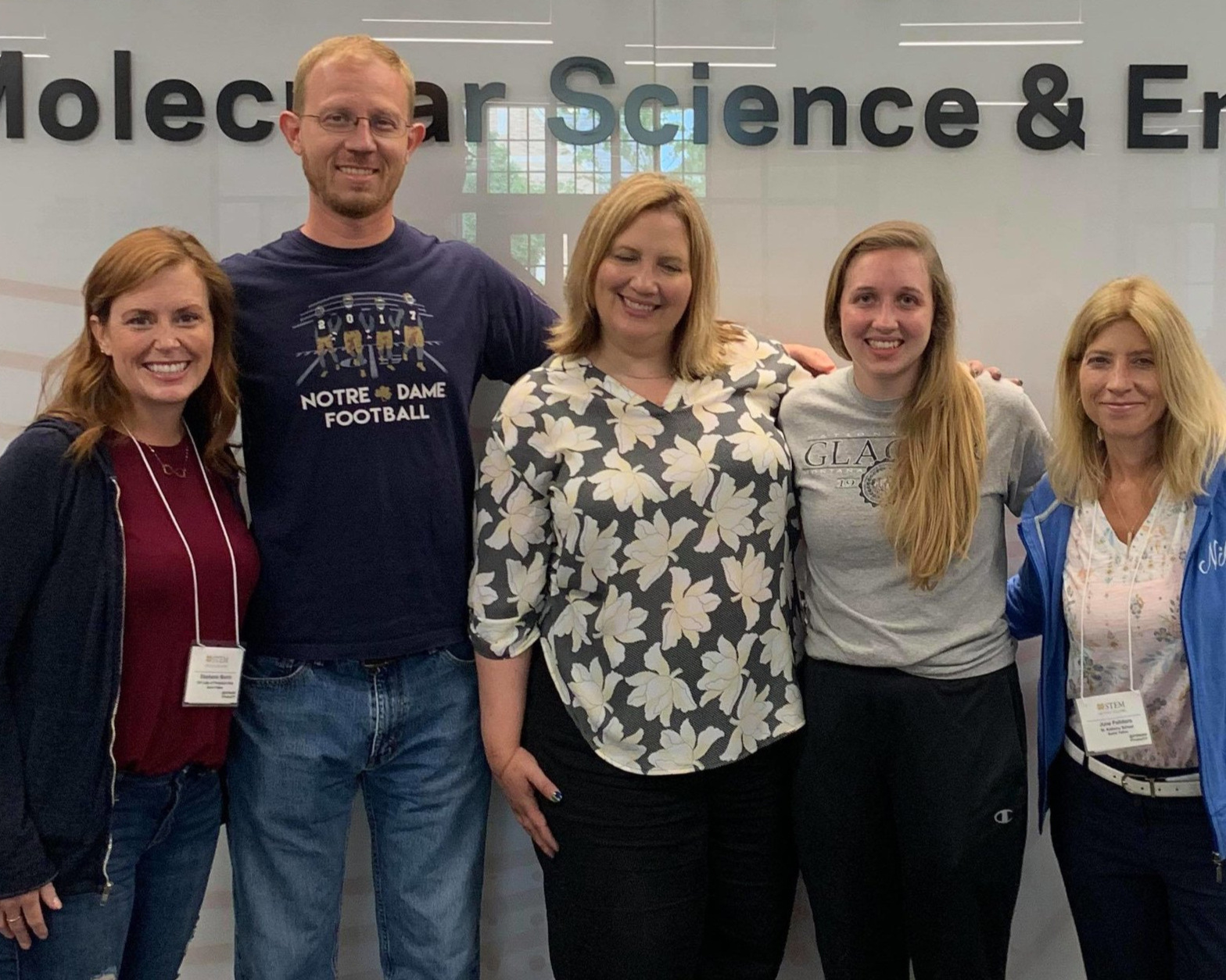Agust won a poster award at the FEMMS conference! Also, the Camden lab was able to visit with our EELS collaborators!
Camden alumni, Vighter and Xin, meet at a recent conference!
The Camden lab at a farewell dinner for our visiting undergraduates this summer.
3 middle school STEM teachers from across the country participated in the first U-Watch teacher residency program at Notre Dame!
Hobbie, a former graduate student, recently visited Notre Dame and spent time learning about the new set-ups in the lab!
This summer, the Camden and Jenkins lab organized a student exchange program. Rowan is working in our lab to develop new SERS detection methods using carbenes!
Agust is learning how to operate the monochromated STEM Microscope at Oak Ridge National Laboratory after earning a position in the ORAU Higher Education Research Experience internship program.
Jon and Joe spent last week running samples with the Advanced Light Source at Berkeley National Lab. Hans Bechtel (pictured) is the expert beamline scientist that oversaw their experiments.
Dr. Xuan Hu has officially joined the Camden lab for his postdoctoral research pursuits!
Joseph Liberko has officially joined the Camden group for his graduate school reseach!
Lindy visited collaborators at the University of Tennessee - Knoxville. Shelby (Jenkins Lab) & Lindy are pictured at the Smoky Mountains.
The Camden group presented our research at the International Conference on Raman Spectroscopy in Jeju, South Korea.
Professor Jon Camden was an invited speaker at the ACS National Meeting in Boston!
The Camden group presented at the Gordon Research Conference on Noble Metal Nanoparticles at Mt. Holyoke College! Picture featuring our collaborators from the Masiello group at UW.
Mike's paper on trace detection of uranyl ion using hyper-Raman has been accepted by ACS Omega!
Surface-enhanced hyper-Raman scattering (SEHRS), the nonlinear analog of surface-enhanced Raman scattering (SERS), provides unique spectral signatures arising from the molecular hyperpolarizability. In this work, we explore the differences between SERS and SEHRS spectra obtained from surface-bound uranyl ion. Exploiting the distinctive SEHRS bands for trace detection of the uranyl ion, we obtain excellent sensitivity (limit of detection = 90 ppb) despite the extreme weakness of the hyper-Raman effect. We observe that binding the uranyl ion to the carboxylate group of 4-mercaptobenzoic acid (4-MBA) leads to significant changes in the SEHRS spectrum, whereas the surface-enhanced Raman scattering (SERS) spectrum of the same complex is little changed. The SERS and SEHRS spectra are also examined as a function of both substituent position, using 2-MBA, 3-MBA, and 4-MBA, and the carbon chain length, using 4-mercaptophenylacetic acid and 4-mercaptophenylpropionic acid. These results illustrate that the unique features of SEHRS can yield more information than SERS in certain cases and represent the first application of SEHRS for trace analysis of nonresonant molecules.













